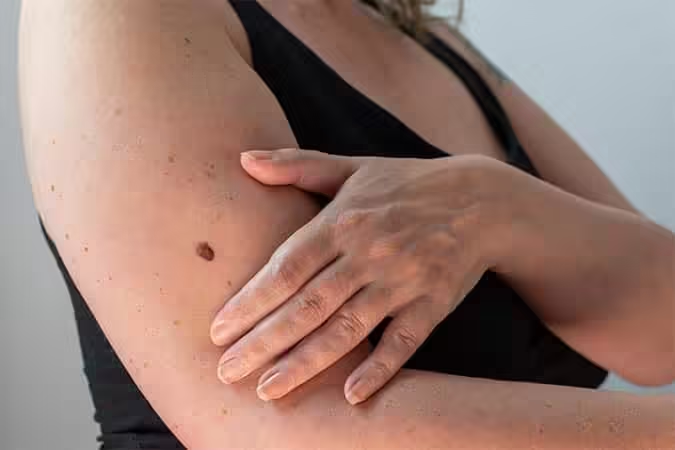Melanoma is a form of skin cancer that may develop from pigment-producing cells in the skin. It can vary in appearance and behaviour, and early detection plays an important role in clinical outcomes.
Common Terms
Melanoma may also be referred to as malignant melanoma, superficial spreading melanoma, or invasive melanoma depending on its characteristics and stage.
Signs to Watch For
Melanomas often appear as new or changing marks on the skin. They may be irregular in shape, asymmetrical, contain multiple colours, or have indistinct borders. Some melanomas are raised, firm, and may bleed or feel irritated. Changes over time are common.
Risk Factors
Factors that may increase the likelihood of developing melanoma include:
- Personal or family history of melanoma
- Presence of multiple or atypical moles
- Fair skin with increased sensitivity to UV exposure
- Use of certain medications (e.g. hydrochorothiazide, natalizumab, fingolimod)
Clinical Progression
Melanomas often begin by spreading outward across the skin surface. In later stages, they may grow deeper into the skin and potentially reach blood or lymphatic vessels. This can lead to secondary growths in other parts of the body.
Clinical Management
Diagnosis and management typically involve procedures such as excision or excision biopsy. Ongoing skin checks may be recommended following diagnosis, with frequency based on individual risk factors and clinical findings.
Prevention
Minimising ultraviolet exposure—especially sunburn during childhood and adolescence—may help reduce risk. Avoiding solarium use and practicing sun protection are also recommended.
For more information, visit Understanding Melanoma – Sunsmart Victoria or refer to the Cancer Council’s educational resources.
If you’ve noticed a new or changing spot on your skin, or would like a professional skin check, contact Hamilton Skin Clinic to book a consultation.














